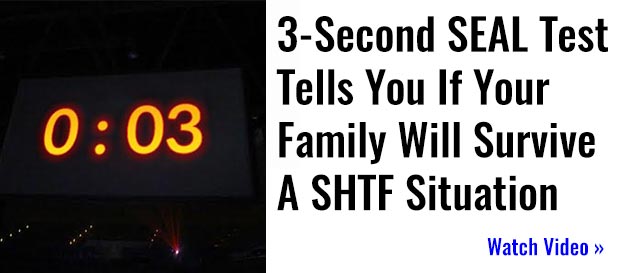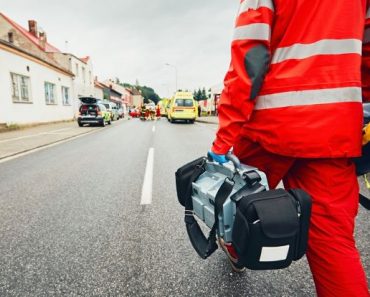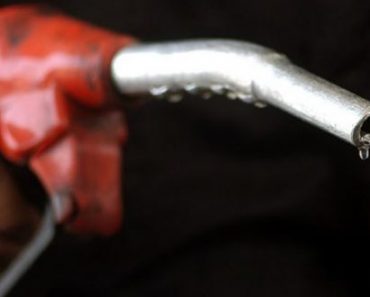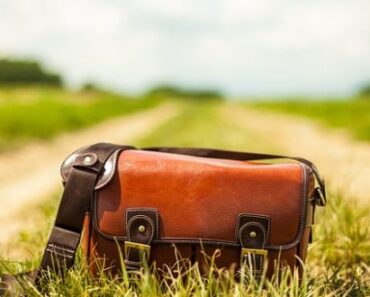Arthritis and other types of chronic pain can make it very hard to shoot. The side effects of the pain medications must also be taken into consideration.
If there are side effects that cause dizziness or blurred vision, for safety sake, don’t do any shooting until it clears and you are no longer under the influence. Now is the time to see if you can get off any medications that cause these side effects. Talk to your doctor and get counseling if you are on something addictive.
3 Second SEAL Test Will Tell You If You’ll Survive A SHTF Situation
It is also essential to know your pain tolerance and how long it takes to recover. While you are working through various issues associated with pain, there are some things you can do to optimize your time at the range and get the most from it.
- Use shorter training sessions over a more extended period.
- Use exercises that stretch and relax your muscles between shooting sessions.
- Use laser handgun practice systems or Airsoft systems that don’t expose you to recoil while practicing. Use this time for improving accuracy and drilling scenarios. This will allow you to practice drawing, aiming, firing, and re-holstering without dealing with recoil that could make painful conditions worse.
- It is essential to keep track of your concentration levels. It is time to stop the practice if you feel tired or achy. When you are tired or distracted, you will be at a much higher risk of making a mistake that injures yourself or others. This also goes for when you are cleaning your guns. Never work on your weapons unless you have plenty of time, won’t be distracted, and are in the best possible physical and mental condition.
Shooting With Impairments Of The Hands, Arms, Or Shoulder
It is still possible for those shooters with physical impairments of the hands, arms, or shoulders to shoot pistols without much difficulty. Many accessories are designed for these impairments to make life better and more accessible at the shooting range.
These accessories are designed to get the shooter through the four stages of shooting a pistol:
- Loading a magazine – For those shooters with weakness in their hands, a universal speed loader may be of some help. To cut down on wasted range time, always load the magazines at home before going to the range. It will also help keep extra magazines loaded and accessible when you are away from home—practice reloading with empty magazines to improve your speed and muscle memory.
- Pulling back the slide – For those with weak hands or wrists, it can be excruciating and trying to pull the slide back on a pistol. A simple accessory called the Brass Stacker Slide Pull by TGR Enterprises can solve this problem. The slide pull accessory attaches to the serrations on the back of the pistol slide. The shooter inserts a finger into a large circular hole in the accessory attachment and pulls straight back to use this device.
- Aiming the pistol – when all is said and done, upper or lower body limitations have nothing to do with your eyes or sense of distance. Therefore, you may be able to shoot accurately with the sights already installed on the gun. If you feel more comfortable, there are several after-market night sights that you can have installed. These sights are excellent in low-light conditions where regular sights are nearly useless to the shooter. Some options include the red dot sight systems or a pistol scope to give a good sight picture. If you don’t want to use these, I recommend laser sights. These come in two colors. The red laser was designed to work better in low light conditions than in bright daylight. The green laser is the best of the two lasers. It works very well in common light conditions or sunlight. Crimson Trace Company makes some of the best red or green lasers on the market. The one you choose will be a personal choice. To use the red or green lasers, you must put the colored dot on the target and pull the trigger. If the laser sight is correctly sighted in, this is where the bullet will impact when the pistol is fired. Laser sights have a tremendous psychological advantage. When a criminal sees the color laser dot suddenly appear on their body, they will know they are about to be hit by a bullet. At the very least, they may halt for a few seconds or do something else that gives you a chance to take control of the situation. Do not forget that someone intending to harm may also be drugged up or have some training that causes them to respond and overcome psychological tactics faster. If you have already brandished your gun, and have sighted the laser, be ready to pull the trigger. Drills on shoot/don’t shoot, controlling your adrenalin responses, reading body language, and situation awareness are crucial to getting through these situations alive and without making a mistake that costs lives.
- Shooting the pistol – there are also accessories for shooters with disabilities in their hands and arms or lack of finger strength. The AdaptiveOutdoorsmen.com website is an online store that specializes in accessories and aids for the disabled and disabled shooter. The finger control device is a strap-on prosthetic device that attaches to the hand and braces the trigger finger to help shooters pull the trigger safely. You may also want to look into wrist guards that will help you manage felt recoil. These devices open up the possibility of firing higher caliber weapons as long as your shoulders can also take the recoil.
Shooting With Leg Impairments
Even if you are not a wheelchair user, leg impairments can still pose some difficulties. For example, if you need to use a walker, cane, crutches, or other walking aids, you must always be aware of the surface of the ground. If the soil is soft spongy terrain, with loose gravel, or thick vegetation, you already know that you are at a higher risk of falling. Ideally, when you are learning to shoot, you should start off practicing on firm, hard ground, with low-cut grass that gives you a sound footing. Later on, you will have to practice on less stable ground, as that is where you may be at higher risk of being attacked.
When using walking aids, they can restrict your options regarding holstering, drawing, and firing the gun. There are two options.
- First – see if you can hold onto the walking aid with one hand while drawing and firing with the other. In most cases, these walking aids will prevent you from using a two-handed firing style; so firing with one hand, across your body, or in a twisted position will be essential.
- Second – even if you must shoot two-handed, you must also be able to remain standing when the recoil hits. You can try practicing using wider leg distances or other body positions to give you a stable fire position. Remember, you will also have to drill on getting into position as quickly as possible. With limited mobility, the timing to set up a shot will take longer and will still put you at a disadvantage.
Things to Practice Along With the Basics
While you are building up your skills, do not forget about responding to different threats. In the beginning, you will save yourself a lot of pain and expense by using Airsoft pistols or laser training guns for this part of your workout. You will be given many simulations that help you gain insight on how to respond and react in different situations. Some skills you must develop include:
- Learn how to fall safely, support yourself, move around, and draw the gun and fire once you are down. Many attackers will try their best to force you to the ground in the opening moves of their attack.
- Learn how to untangle yourself from a walker, crutches, canes, or other walking aids.
- Learn how to get out of the line fire.
- Practice how to get behind good cover.
- Practice increased speed when drawing the weapon.
- Learn safe returning fire techniques.
- Learn how to safely re-holster the weapon.
You must assess the situation and do all of these things without losing balance or falling over. The more and different scenarios you try out in training, the better chance you will make the right choice in an actual situation. The more you are exposed to in training, the lower the risk of freezing up or panicking when you must use the gun to save your life or the life of someone else.
Choosing The Right Holster
Whether you are in a wheelchair or using a walking aid, you can expect problems drawing a handgun from a holster. In a wheelchair, it can be hard to reach around and grab the gun. Also, the wheelchair arms can get in the way. If using walking aids, using a hip holster may get in the way when trying to draw from the holster.
The following holster types may be better for your needs:
- Shoulder Holsters– These holsters are excellent for those shooters that must sit in a wheelchair or for those shooters that use walking aids as long as they don’t interfere with the use of these aids.
- Fanny Pack Holsters– These fanny packs look and operate just like any other fanny pack, but they have a quick access holster compartment. The different compartments can carry extra ammunition or anything else that you need. Since many wheelchair users are tossed out of the chair when attacked, fanny pack holsters give you a more accessible option for firing on the ground. When worn correctly, it is possible to be able to draw and fire from the ground. When using a walking aid, the fanny pack can also be worn on either hip where it is out of the way.
- Cross-Draw Holsters – This holster allows you to draw from the other side of your body. You can position the holster more to the front of your body or keep it closer to the side of your hip. This holster can be used safely by wheelchair users and those using walking aids.
No matter which type of holster or fanny pack you carry, you must practice regularly to develop a safe drawing and firing technique. This means you must live fire and dry fire regularly to build muscle memory for the drawing technique you will be using. You will draw your weapon quickly and smoothly without panicking or dropping the gun in a time of heavy stress. These drills are a lifesaver for you and others you are protecting in time of need.
Finding The Right Firearms For You
Every shooter, disabled or not, must find the right weapon for them. Here are some questions you should ask when choosing a gun and a place to practice:
- Are there handicapped accessible ranges in your area? Make sure you can easily set up and retrieve targets and manage other aspects of shooting safely.
- Can you hold a gun firmly enough to prevent a limp wrist? As a shooter, you must have a weapon steady when firing; if not, your shots may miss the target, or the brass may not eject appropriately if you cannot hold the gun properly. If you have weak wrists or pain that prevents you from holding a pistol correctly, a revolver may be a better option. Do not forget to look into support devices that will expand your weapon options.
- Can you hold the gun in the extended arm position? If not, here again, you will need wrist or arm braces that will let you use the sights correctly.
- Can you safely pull the trigger? If your hands are weak, you may not be able to pull double-action triggers on semi-auto pistols or revolvers. When you find a gun that seems right for you in every other way, ask if there is an after-market trigger assembly that includes a lighter weight trigger or some further modification that will help you.
- Can you draw, shoot, reload, and holster the firearm? Sometimes something as simple as a different carry position or modified holster can solve this.
- Can you safely maintain a firearm? You must be able to field strip the gun, clean it, lubricate it, and reassemble it. If you can’t do these things yourself, you must have friends or family members do them for you.




























